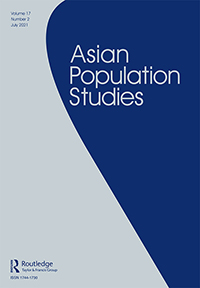
Women’s limited intra-household decision-making power has several dimensions: geographic, cultural, economic, and demographic. The dimension we focus on in this paper relates to women’s transition into marriage. Marriages in India are near universal and age at marriage is low implying that nearly all women spend a large part of their lives in a marriage. However, little is known about the bearing events transpiring at the beginning of a woman’s marriage have on the path of her decision-making power in the household over her life course. Drawing on the life course theoretical framework, we argue that household authority follows a trajectory, which begins at least with her transition to marriage. Our analysis using panel data of 20,927 mothers from IHDS indicate three marriage types- self-choice marriages (5 per cent), parent-arranged with no choice on the part of young women (39 per cent) and parent-arranged – with some choice (56 per cent). Women who started married life in self-choice marriages later end up with the most decision-making power. But a complex pattern of power relationships emerges among wives, husbands, and in-laws. ‘Some-choice’ marriages empower husbands and not the parents-in-law while ‘no-choice’ marriages typically benefit the parents-in-law and not the husbands or the wives.